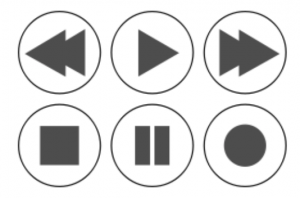
“We don’t stop playing because we grow old;
we grow old because we stop playing.” ~George Bernard Shaw
Mental models are powerful ideas to learn. They act like rules of thumb, that is, rough principles/heuristics to guide the traffic of our minds. The important criteria on whether to adopt a particular mental model is to evaluate, “Is this helpful?”
If you are in your thirties and above, you might recall the days of playing those bulky videotapes from a VHS machine. It requires manually forwarding and rewinding, until the tape head gets dirty and the visuals become blurry. Or you sit there, waiting for your favorite movie to play on TV, so that you can hit record (and pause when those crappy adverts appear), for many more hours of repeated viewing.
Here’s one mental model based on this idea.
PRESS PLAY
When your life feels like is on pause, press play.
Play, do something fun, get down on the floor with a baby. Go to the beach, strum that guitar, sing in the bathroom, or go tickle your partner.
PRESS PAUSE:
When life takes over and moves too fast like it’s flashing you by, press pause. Recompose, and study one frame of your life. Contemplate on it. It’s ok to take a pause.
PRESS FAST FORWARD:
When you feel stuck, it’s ok to press fast forward. Get out of the rut by stepping on the pedal to the wheels moving. Fast.
PRESS STOP:
(Ever heard a record player get stuck on the same groove on a vinyl and you just let it keep playing? It’s hypnotic).
When things play and replay in your head like a bad loop, press stop.
Then, change what is playing in the first place.
Have you ever feel like you are speeding to get to somewhere because you are late, only to meet with a red light? What do you do? You take heed of the sign, and stop. There are things not within your control. And realise the world is not about you.
Stop. Breathe. Re-treat, or just give yourself a treat.
PRESS REWIND:
Moments of transitions and change, or big events like Christmas, new year, anniversaries and birthdays, are a good time to press rewind.
Recall moments in your life that you were moved, touched and deeply grateful for. Look at pictures and journals. Put on that old song and indulge in the next few minutes. Go back in time. If you keep worrying about time, you lose time.
This is not simply nostalgia, but its a platform of creating self-continuity into your future. As the Japanese proverb goes, a good time to look at the past is on a summer’s eve.
PRESS RECORD:
Whatever the shit may be, don’t forget to press record. Then hit rewind, and play it back again.
Learn to write things down. Date it, so that you know which time in your life you had this wisdom. To capture a moment, take a photograph. Not at yourself, but at the life that is in front of you.
Reflect:
Do you know what to press, and when?
No one strategy applies to all of life. Life has its platitudes. As the adage goes, if you hold a hammer, suddenly everything becomes a nail.
Play with this idea.
Where our attention is, that is where our life is.
Happy Christmas & a playful new year ahead.
Yours,
Daryl Chow Ph.D.
29th of Dec 2016




Recent Comments